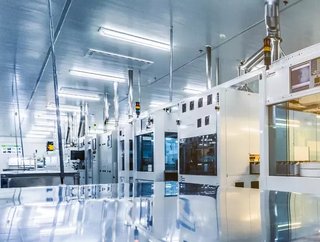Digital Factories Drive Smarter Manufacturing Operations

It’s generally accepted that the hidden factory accounts for anywhere from 20 to 40% of an organisation’s total capacity, proposed by quality guru Armand V. Feigenbaum. He called the hidden factory “that part of your organisation that exists to do bad work—not because you want to do bad work, but because the whole process is such that you are driven into it.”
In essence, the hidden factory is those undocumented processes that work against quality and efficiency, creating invisible roadblocks to strategic goals while driving up costs. Most troubling is the fact that the problems associated with the hidden factory go far beyond traditional quality costs.
But, by investing in digital transformation, factories become smart factories and provide greater visibility to the plant floor. Hidden processes affect manufacturing organisations, so can a light be shone on them to reveal the inefficiencies they create?
Examples of the hidden factory at work
You don’t have to look far to start noticing the ways that hidden processes create unplanned problems in the manufacturing environment. Examples include:
- Having multiple versions of specifications, increasing the chances of using an outdated version while increasing the time it takes to update the right one
- Operators reworking parts at their station, taking extra steps that others don’t know about (which causes problems when that operator is away from work or leaves)
- Line supervisors speeding up cycle time to catch up when they’re behind, not realising it’s causing hidden part damage
- Sorting mix-ups that allow defective products to reach the customer
- Lag time in reporting quality data that allows problems to get worse
- Making it difficult for people to share ideas and improvements with excessive red tape
- Operators not carrying out preventative maintenance on machines leading to hidden part damage and future machine failure
Hidden factory costs to consider
The costs of the hidden factory show up in many different places, including traditional quality costs such as:
- Scrap and rework: The cost of scrap and rework totals up to 2.2% of sales for organisations today, meaning that a manufacturer with £2 billion in annual sales £32 million a year is being wasted on scrap and rework that could be better spent elsewhere in the business.
- Customer complaints and warranty costs: While product design failures are typically more expensive than production defects, either can lead to a recall resulting in millions (or more) in costs.
- Corrective action costs: If the customer has to stop the line while you bring in people to sort parts, you could be looking at £10,000 a minute.
Although these are the more obvious costs, there are many more that are less easily measured. Examples include the cost of inefficiency, as well as the cost of not being able to capitalise on new opportunities due to time and resource constraints.
According to the ASQ, the hidden factory can also result in misleading numbers, increasing metrics like work in progress, cycle time and setup time. Not accounting for error rates can also lead to flawed productivity metrics, making it appear that the plant is running well—when in reality hidden problems are getting worse.
Using digital transformation to tackle the hidden factory
Whole industries are devoted to helping manufacturers mitigate the effects of the hidden factory. Industry 4.0 technologies in particular are helping companies make huge leaps in efficiency and reliability with advanced tools like artificial intelligence (AI) and internet of things (IoT).
Other digital transformation initiatives that leverage quality software can also reduce lag time in reporting while helping manufacturers get closer to the source of defects. Mobile layered process audits (LPAs) are one example, allowing for quick daily checks to identify variation that causes downstream defects. LPAs and activities like Gemba walks get leaders onto the plant floor, where they can look for hidden inefficiencies by asking questions, challenging the status quo and integrating lessons from other plants.
The costs of the hidden factory run wide and deep in manufacturing organisations today, which may total billions of dollars just for the largest automotive and aerospace suppliers before we consider other manufacturers. Rooting out these processes takes time, and there are no easy answers. Digital transformation tools are helping companies uncover and correct inefficiencies in the process, increasing awareness of the source of defects while fostering communication and sharing of ideas.
- JPB Système: Aerospace challenges & sustainable processesSustainability & ESG
- Interview with Matthieu Rambaud, CEO of TRIGO GroupProcurement & Supply Chain
- Model N’s Chris Shrope: exploring high-tech in manufacturingTechnology
- TreviPay’s Brandon Spear on manufacturing payment solutionsTechnology






